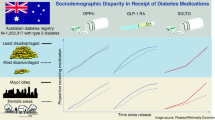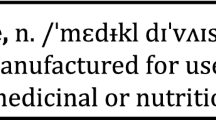Abstract
BACKGROUND
Increased use of generic medications conserves insurer and patient financial resources and may increase patient adherence.
OBJECTIVE
The objective of the study is to evaluate whether physician, patient, pharmacy benefit design, or pharmacy characteristics influence the likelihood that patients will use generic drugs
DESIGN, SETTING, AND PARTICIPANTS
Observational analysis of 2001–2003 pharmacy claims from a large health plan in the Western United States. We evaluated claims for 5,399 patients who filled a new prescription in at least 1 of 5 classes of chronic medications with generic alternatives. We identified patients initiated on generic drugs and those started on branded medications who switched to generic drugs in the subsequent year. We used generalized estimating equations to perform separate analyses assessing the relationship between independent variables and the probability that patients were initiated on or switched to generic drugs.
RESULTS
Of the 5,399 new prescriptions filled, 1,262 (23.4%) were generics. Of those initiated on branded medications, 606 (14.9%) switched to a generic drug in the same class in the subsequent year. After regression adjustment, patients residing in high-income zip codes were more likely to initiate treatment with a generic than patients in low-income regions (RR = 1.29; 95% C.I. 1.04–1.60); medical subspecialists (RR = 0.82; 0.69–0.95) and obstetrician/gynecologists (RR = 0.81; 0.69–0.98) were less likely than generalist physicians to initiate generics. Pharmacy benefit design and pharmacy type were not associated with initiation of generic medications. However, patients were over 2.5 times more likely to switch from branded to generic medications if they were enrolled in 3-tier pharmacy plans (95% C.I. 1.12–6.09), and patients who used mail-order pharmacies were 60% more likely to switch to a generic (95% C.I. 1.18–2.30) after initiating treatment with a branded drug.
CONCLUSIONS
Physician and patient factors have an important influence on generic drug initiation, with the patients who live in the poorest zip codes paradoxically receiving generic drugs least often. While tiered pharmacy benefit designs and mail-order pharmacies helped steer patients towards generic medications once the first prescription has been filled, they had little effect on initial prescriptions. Providing patients and physicians with information about generic alternatives may reduce costs and lead to more equitable care.
Similar content being viewed by others
References
IMS Health. Available at: http://www.imshealth.com/ims/portal/front/articleC/0,2777,6599_3665_77180090,00.html . Accessed February 5, 2007.
Heffler S, Levit K, Smith et al. Health spending growth up in 1999; faster growth expected in the future. Health Aff. 2001;20(2):193–203.
Hoffman JM, Shah ND, Vermeulen LC, Hunkler RJ, Hontz KM. Projecting future drug expenditures—2004. Am J Health Syst Pharm. 2004;61(2):145–58.
Fischer MA, Avorn J. Potential savings from increased use of generic drugs in the elderly: what the experience of Medicaid and other insurance programs means for a Medicare drug benefit. Pharmacoepidemiol Drug Saf. 2004;13(4):207–14.
Fischer MA, Avorn J. Economic implications of evidence-based prescribing for hypertension: can better care cost less? JAMA. 2004;291(15):1850–6.
Kohl H, Shrank WH. Increasing generic drug use in Medicare Part D: The role of government. J Am Geriatr Soc. 2007;55(7):1106–9
Haas JS, Phillips KA, Gerstenberger EP, Seger AC. Potential savings from substituting generic drugs for brand-name drugs: medical expenditure panel survey, 1997–2000. Ann Intern Med. 2005;142(11):891–7.
Kaiser Family Foundation and Health Research and Educational Trust. Employer health benefits: 2004 summary of findings. (Accessed October 12, 2004, at http://www.kff.org/insurance/7148/loader.cfm?url=/commonspot/security/getfile.cfm&PageID=46206 )
Shrank WH, Hoang T, Ettner SL, et al. The implications of choice: prescribing generic or preferred formulary medications improves adherence to chronic medications. Arch Intern Med. 2006;166:332–7.
Federman AD, Halm EA, Siu AL. Use of generic cardiovascular medications by elderly Medicare beneficiaries receiving generalist or cardiologist care. Med Care. 2007;45(2):109–15 (Feb).
Federman AD, Halm EA, Zhu C, Hochman T, Siu AL. Association of income and prescription drug coverage with generic medication use among older adults with hypertension. Am J Manag Care. 2006;12(10):611–8 (Oct).
Shrank WH, Fox SA, Kirk A, et al. The Effect of Pharmacy Benefit Design on Patient-Physician Communication about Costs. J Gen Intern Med. 2006;21(4):334-9.
Shrank WH, Young HN, Ettner SL, Glassman P, Asch SM, Kravitz RL. Do the incentives in 3-tier pharmaceutical benefit plans operate as intended? Results from a physician leadership survey. Am J Manag Care. 2005;11(1):16–22.
Alexander GC, Casalino LP, Meltzer DO. Physician strategies to reduce patients’ out-of-pocket prescription costs. Arch Intern Med. 2005;165(6):633–6.
Oregon Health Sciences University. Drug Evaluation Review Project. Accessed 12/19/05 at: http://www.ohsu.edu/drugeffectiveness/reports/index.htm .
Halpern MT, Khan ZM, Schmier JK, et al. Recommendations for evaluating compliance and persistence with hypertension therapy using retrospective data. Hypertension. 2006;47(6):1039–48, Jun.
Soobader M, LeClere FB, Hadden W, Maury B. Using aggregate geographic data to proxy individual socioeconomic status: does size matter? Am J Public Health. 2001;91:632–6.
Geronimus AT, Bound J. Use of census-based aggregate variables to proxy for socioeconomic group: evidence from national samples. Am J Epidemiol. 1998;148(5):475–86.
Performance of comorbidity scores to control for confounding in epidemiologic studies using claims data. Am J Epidemiol. 2001;154(9):854–64 (Nov 1).
Baldwin LM, Adamache W, Klabunde CN, Kenward K, Dahlman C, Warren JL. Linking physician characteristics and medicare claims data: issues in data availability, quality, and measurement. Med Care. 2002;40(8 Suppl):IV-82–95.
Shea JA, Kletke PR, Wozniak GD, Polsky D, Escarce JJ. Self-reported physician specialties and the primary care content of medical practice: a study of the AMA physician masterfile. American Medical Association. Med Care. 1999;37(4):333–8.
Rector TS, Finch MD, Danzon PM, Pauly MV, Manda BS. Effect of tiered prescription copayments on the use of preferred brand medications. Med Care. 2003;41(3):398–406.
Huskamp HA, Deverka PA, Epstein AM, Epstein RS, McGuigan KA, Frank RG. The effect of incentive-based formularies on prescription-drug utilization and spending. N Engl J Med. 349(23):2224–32.
Schneeweiss S, Walker AM, Glynn RJ, Maclure M, Dormuth C, Soumerai SB. Outcomes of reference pricing for angiotensin-converting-enzyme inhibitors. N Engl J Med. 2002;346(11):822–9.
Landsman PB, Yu W, Liu X, Teutsch SM, Berger ML. Impact of 3-tier pharmacy benefit design and increased consumer cost-sharing on drug utilization. Am J Manag Care. 2005;(10):621–8.
Goldman DP, Joyce GF, Escarce JJ, et al. Pharmacy benefits and the use of drugs by the chronically ill. JAMA. 2004;291(19):2344–50.
Motheral B, Fairman KA. Effect of a three-tier prescription copay on pharmaceutical and other medical utilization. Med Care. 2001;39(12):1293–304.
Christian-Herman J, Emons M, George D. Effects of generic-only drug coverage in a Medicare HMO. Health Aff (Millwood). 2004;Suppl Web Exclusives:W4-455–68.
Gibson TB, Ozminkowski RJ, Goetzel RZ. The effects of prescription drug cost sharing: a review of the evidence. Am J Manag Care. 2005;11(11):730–40.
Shrank WH. The effect of incentive-based formularies on drug utilization and spending. N Engl J Med. 2004;350(10):1057.
Gross R, Zhang Y, Grossberg R. Medication refill logistics and refill adherence in HIV. Pharmacoepidemiol Drug Saf. 2005;14(11):789–93.
IMS Health. 2004 year end U.S. prescription and sales information and commentary. http://www.imshealth.com/ims/portal/front/articleC/0,2777,6599_3665_69890098,00.html. Accessed 5/14/07.
Adair RF, Holmgren LR. Do drug samples influence resident prescribing behavior? A randomized trial. Am J Med. 2005;118(8):881–4.
Conflicts of interest
None disclosed.
Author information
Authors and Affiliations
Corresponding author
Rights and permissions
About this article
Cite this article
Shrank, W.H., Stedman, M., Ettner, S.L. et al. Patient, Physician, Pharmacy, and Pharmacy Benefit Design Factors Related to Generic Medication Use. J GEN INTERN MED 22, 1298–1304 (2007). https://doi.org/10.1007/s11606-007-0284-3
Received:
Revised:
Accepted:
Published:
Issue Date:
DOI: https://doi.org/10.1007/s11606-007-0284-3




